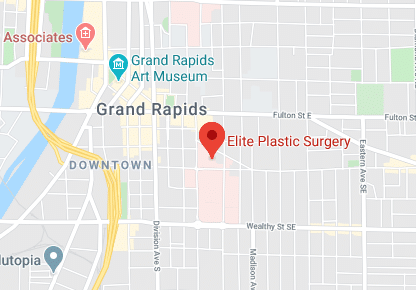
Skin cancer is the most common cancer in humans because, unlike elephants, our skin isn’t very good at protecting us from the sun’s ultraviolet rays. Knowledge is key to protecting yourself, especially with summer right around the corner, so here’s a little Skin Cancer 101 from your friends at Elite Plastic Surgery.
Three types of skin cancer
Basil cell carcinoma — This is the most common form of skin cancer. Basil cell carcinomas affect the basal cells, which are found under the squamous cells and produce new skin cells. If caught early, this type of skin cancer is also easy to remove.
Squamous cell carcinoma — This forms in the squamous cells, the flat cells just below the outer surface of the skin. Squamous cell growths, if detected early, are very easy to remove.
Melanoma — This is the “M” word of skin cancer, and you don’t want to hear it. Melanoma forms in the melanocytes where skin pigments are produced. Melanoma is far and away the most serious type of skin cancer because, unlike squamous and basil cell carcinomas, it easily spreads to other parts of the body.
Treating skin cancer
Treating skin cancer is wholly dependent on the individual situation. The type, size, and location of the tumor dictate our treatment options. At Elite, our goal is to remove or destroy the cancer with the least possible scarring. These are the ways to remove your skin cancer:
- Cryosurgery — If you’ve ever been to a dermatologist, you know this routine. Abnormal cells are frozen with liquid nitrogen. This is usually used on pre-cancerous cells that could become cancerous, but is not something we do at Elite.
- Surgical excision — The cancerous area of the skin is cut out with a scalpel and the area is closed with stitches.
- Curettage and desiccation — The cancerous growth is scooped out of the skin with a curette.
- Mohs micrographic surgery — Cancerous tissue is removed along with minimal adjacent tissue. The tissue is then examined under a microscope to see that all of the cancerous cells have been removed. If not, another ring is removed a bit further out, and the examination is repeated.
Most people don’t lump skin cancer in with the other cancers, but it is not something to be taken lightly. If you have growths that are irregular in shape, color, size, or texture, or if any of them change shape or color, those are signs that the growth could be skin cancer. Contact us or call us at 616-459-1907 to schedule your appointment.


No comments yet.